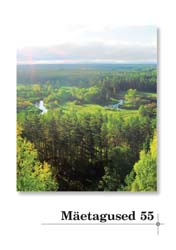Pärimuslikud kohamääratlused ja liikuvate ohuallikate kaardistamine usundilistes juttudes
Traditional Place Designations and the Mapping of Mobile Sources of Danger in Belief Narratives
Author(s): Reet HiiemäeSubject(s): Customs / Folklore
Published by: Eesti Kirjandusmuuseum
Keywords: belief narratives; cognitive mapping; places; narrative localisations; media-influenced narration
Summary/Abstract: The article provides an overview of the mediation of cognitive danger mapping based on traditional place designations in belief narratives. Firstly, processes of cognitive mapping are observed, using the example of plague tradition, and further on, parallels are drawn with modern religious phenomena, such as spiritual mapping in Neo-Pentecostalism, which aims to identify places in the landscape where demons lie in wait for humans, as well as delimiting the movement trajectories of dangerous criminals by way of their narrative localisation with concrete place designations in the landscape. As a novel feature, the article focuses on narrative localisation phenomena in connection with mobile sources of danger, which are not related to concrete places. The author demonstrates the similarities in the evolution of cognitive danger maps in older legends (e.g. plague legends) and in modern media-influenced belief narrations about potential and real criminals. Also, the importance of such danger maps in selective information collection and remembering is discussed, as well as how it determines the re-narration and behaviour. The author concludes that, in addition to pragmatic causes of origin (an aid for safe moving in space), narrative danger maps have a securing function supporting the subjective feeling of coping.
Journal: Mäetagused. Hüperajakiri
- Issue Year: 2013
- Issue No: 55
- Page Range: 29-52
- Page Count: 24
- Language: Estonian

